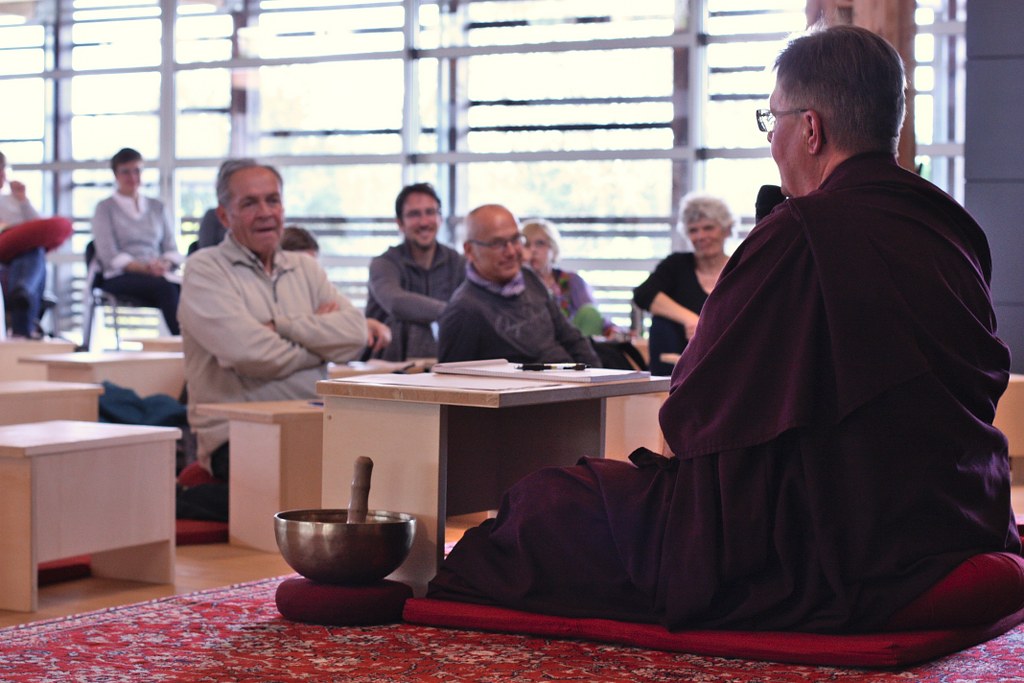Leading a cycle of teaching at Dhagpo Kagyu Ling was a first for me. And it appears to have generated an interest that has not declined over the course of the cycle!
Roughly sixty people participated in these teachings, either occasionally or, for many of the students, as a whole.
It was very interesting to discover people as the cycle unfolded—to get to know them better and to better understand their interests and their questions.
Throughout the courses, there are exchanges, discussions, and sharing, but there is also all that takes place during breaks, meals, and evenings. All of this adds to the cohesion of the group and allows for trust to develop. It is truly heartwarming to see and experience the joy of these meetings!
We have progressed together in our reflections. We have refined our questions, revealed our personalities—bit by bit—and we have deepened our questioning to understand and face our functioning, our failings, our limits, and our resources.
How do we live and take responsibility for things in our lives? We do so by accepting our conditions, all while being aware of our fears and resistances and relying on our resources. This requires discernment, attention, and awareness.
Can we experience fear in new way? Again, it is a better understanding of our functioning, which is colored by emotional obscurations, that is the basis for a new look at fear. It is part of the Buddhist path—even the engine, in a certain way.
What about ethical communication? This is firstly a communication that does not cause harm—that does not hurt or deceive others. It is a form of communication that is a resource, that unites what is beneficial and helpful for oneself and others. It is also an intelligent communication based on appropriate motivation that progressively brings together the conditions necessary for its goal.
During each course, we focused on the fact that the practice of the spiritual path occurs in the details of daily life—in the situations we encounter—whether they are personal or professional. We aimed to see that training is a question of being present with oneself and attentive to others. All of this seems obvious when we talk about it, but our habits quickly get the best of us!
“Yes, I understand what is being said, but it’s difficult to apply it from day to day!” is one of the phrases I heard most often.
Indeed, it takes time to reflect on the meaning of the teaching and to turn information into personal knowledge and experience. This integration period is essential so that what we receive and understand can become a part of our lived experience.
Training has three aspects: ethics, meditation, and discernment. We practice this training daily on the cushion so that it can filter into our everyday life through repeated observation of our functioning and our way of experiencing our relationship to ourselves and others.
Anila Trinlé





